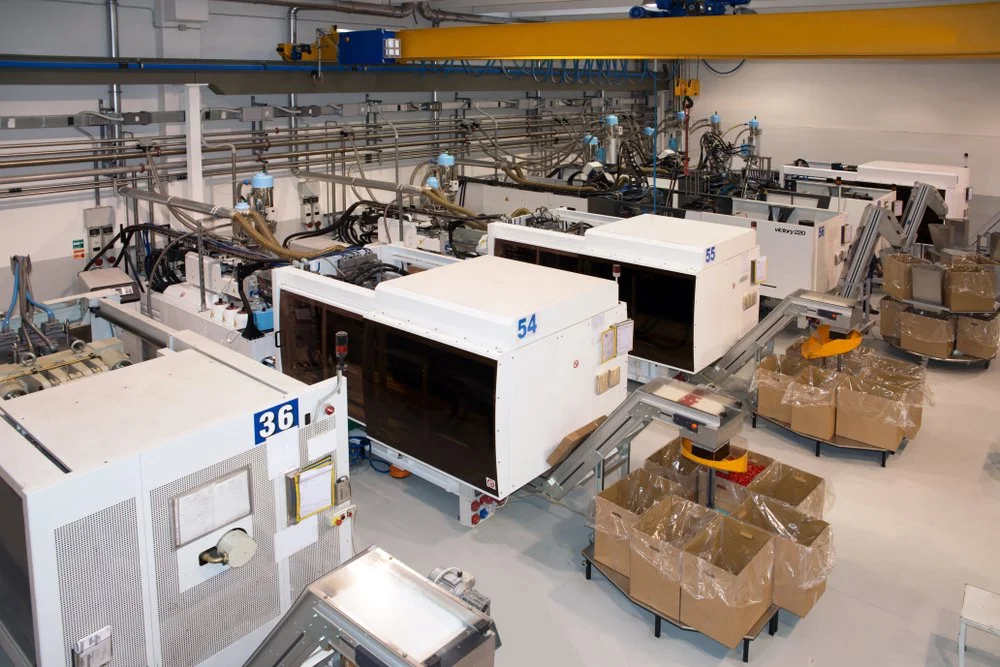The True State of the Plastics Industry
From the outside, things seem great.
- The stock market is strong.
- Reshoring is a national priority.
- Tariffs are meant to boost domestic manufacturing.
- Government programs are investing in American production.
- Unemployment is low.
So why does it feel like the plastics industry is holding its breath?
Ask many running a press, quoting a job, or trying to schedule production and you may hear a different version of the story: It’s quiet. Even too quiet.
Two realities are emerging
On one side: the public narrative of a U.S. manufacturing renaissance. On the other: plastics processors and mold manufacturers are facing pricing pressure, slow purchase orders, and unpredictable demand.
At Diemaster, we work with molders and OEMs across North America and the feedback we’re hearing is unsettling:
Orders are delayed or not coming at all
Customers are holding back on new programs
Projects are getting held up mid-stream
Price undercutting is driving unsustainable margins
Suppliers and vendors are also feeling the pinch
This is not the manufacturing boom we expected to be happening.
What’s causing the disconnect?
1. Buyers are on pause
Even with reshoring rhetoric in the news, many large buyers are still playing it safe. They’re delaying investments, spreading fewer orders across more vendors, and slow-walking decision-making.
2. Price pressure from all sides
With fewer jobs to go around, processors and mold builders are underbidding each other to win work. That means margins shrink, corners are cut, and everyone feels the pain especially smaller or family-run operations.
3. Materials volatility
Manufacturing material prices have been all over the map. While some materials have stabilized, uncertainty in pricing continues to make quoting and long-term planning difficult.
4. Tariffs are a mixed bag
Tariffs on overseas goods were supposed to protect U.S. manufacturers, but they haven't guaranteed work. In some cases, buyers have simply turned to alternative low-cost countries or passed costs back down the chain to domestic suppliers.
5. Investment doesn’t always reach the floor
While massive funding is going to tech hubs and semiconductor projects, small to mid-size manufacturers in the plastics industry aren’t always seeing that money or the demand that was supposed to come with it.
The ripple effect
It’s not just part producers feeling the squeeze. Mold makers, automation vendors, material suppliers, and logistics partners are all caught in a slowdown. Everyone downstream feels it when production lines sit idle.
What’s worse? It’s hard to plan. Hiring is risky. Investing in new machines feels uncertain. And the optimism seen in headlines just doesn’t line up with what’s happening day to day.
So what now?
This isn’t a crisis. It’s a call for clarity and alignment.
- Customers need to understand that quality, delivery speed, and long-term reliability depend on sustainable pricing.
- Manufacturers need to resist the urge to win on price alone. Race-to-the-bottom tactics hurt the whole supply chain.
- Industry leaders need to speak up about the real conditions and push for smarter, inclusive growth strategies.
- Policymakers need to understand that healthy American manufacturing starts with consistent demand and support for suppliers at every level.
It’s time for real talk
At Diemaster, we’re proud to serve the plastics industry, working with molders and manufacturers who care deeply about quality and craftsmanship. But to truly strengthen American plastics manufacturing, we need more than positive headlines.
We need real momentum. Real investment. Real partnerships. And real conversations about what’s working, and what isn’t.
It’s up to all of us to make the future what we want it to be. So, let’s face the present with support for each other.


